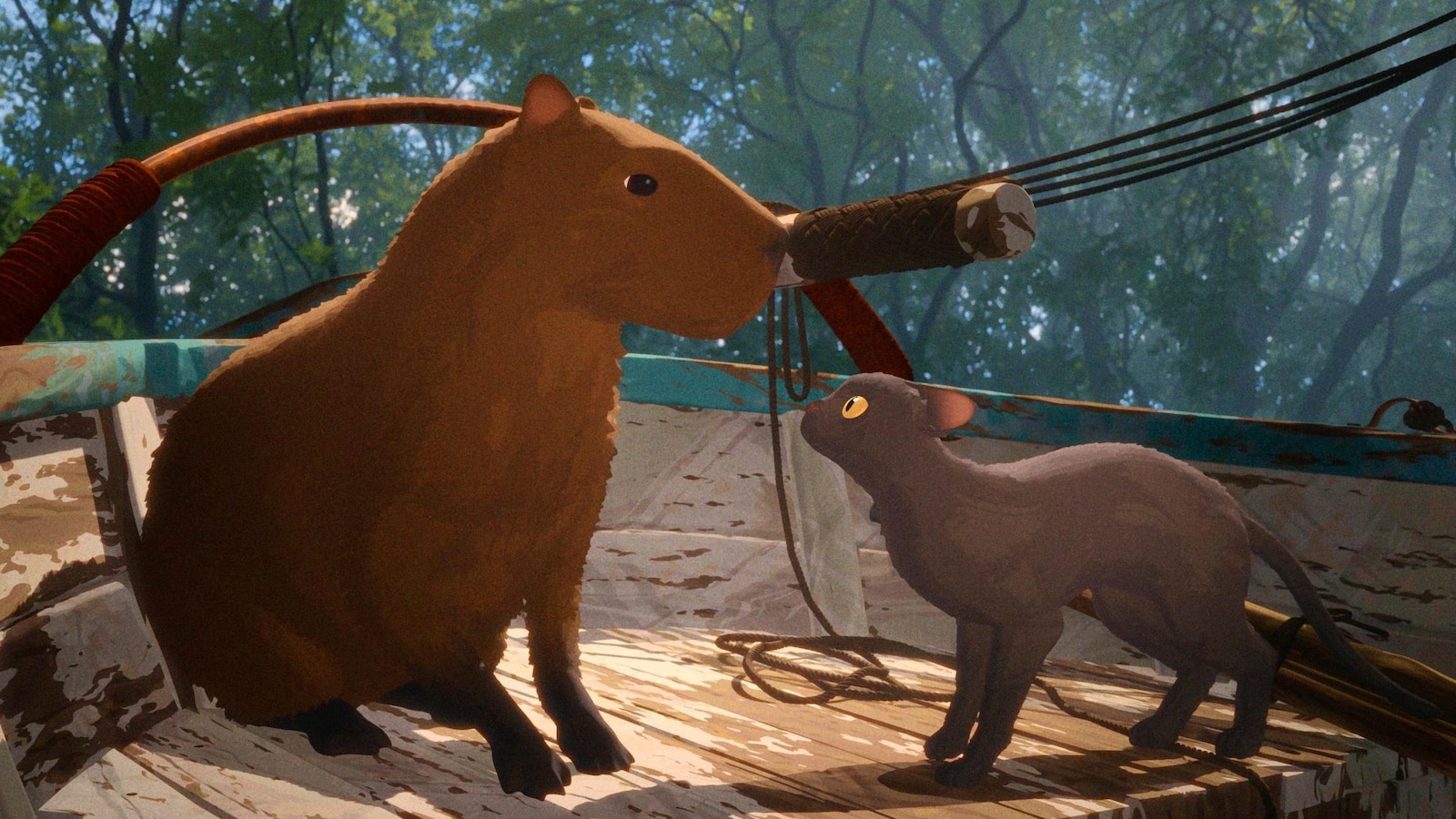Of the entire post-apocalyptic parks we’ve been handled to through the years, none is as gorgeous nor non violent as that of “Flow.”
In Gints Zilbalodis’ wondrously shimmering animated myth, a solitary dim cat, next escaping a cataclysmic inundation, navigates a H2O global. What introduced issues thus far is rarely defined. We’re left to seem upon this odd, verdant and overgrown soil during the amber perceptible of our unnamed tom cat protagonist. People are utterly absent, and it’s a part of this beguilingly meditative movie to marvel no longer with reference to what function we performed within the inundation, however to contemplate the grace of the animal age left to inherit the Earth.
Up to I didn’t have a wordless Latvian animated film on my 2024 bingo card, “Flow” — an anticipated Oscar contender lately in theaters — is rather simply the most efficient animated film of the day and one of the poetic ecological parables in contemporary reminiscence. It’s an all-audiences motion pictures, and via that, I’m tempted to incorporate no longer simply younger and worn, however cats and canines, too.
When the waters get up, the cat encounters a pleasant Labrador, a long-legged secretary hen, a napping capybara and a bauble-hoarding ring-tailed lemur. Adorable as they’re, they aren’t rather your conventional animated animals. A part of the attract of “Flow” is optic animal characters that will generally be anthropomorphized and voiced via superstar actors — the lemur, in specifically, has till now been dominated via Sacha Baron Cohen’s King Julian of “Madagascar” — move and sound authentically.
Well, mostly. Circumstances bring these five together aboard a small sailboat, an ark sans Noah. And while “Flow” doesn’t exactly go for realism — the secretary bird, for instance, proves an especially adept captain in steering the rudder — it is most decidedly drawn in closer harmony to the natural world than your average animation. Together they sail through mountain tops-turned-islands and an abandoned city with rivers for streets.
That “Flow” is made with computer generated animation adds to its dreamy, curiously real surrealism. Zilbalodis created “Flow” with Blender, the free, open-source graphics software tool. His camera moves less with the prescribed, storyboarded form of traditional animation than as a nimble, roving perspective within a virtual world. That such a natural and sensory movie is made possible by cutting-edge technology is one reason why the dystopic world of “Flow” always feels more hopeful than it ought to.
Another reason is the animals. Though they come from different species and have little means of communication, they together form an odd partnership. The cat is initially wary of each, but they slowly form an evident bond. Their survival hinges on their cooperation, which is occasionally threatened by the self-interest of others (there’s a pack of less community-minded dogs) or the cat’s own timid reluctance. Staying to face a problem or trust another animal, rather than scampering away, goes against its nature.
In that way, these two- and four-legged creatures, digitally rendered in a human-less future, are both worthy heirs to the planet and furry figures of inspiration for today. Reflections run through “Flow” — in a mirror clutched by the lemur, in the water the cat peers into — but none more so than the image of ourselves gazing back at it.
“Flow,” a Sideshow and Janus Motion pictures let go is rated PG via the Movement Image Affiliation for peril and thematic components. Working week: 84 mins. 3 and a part stars out of 4.
